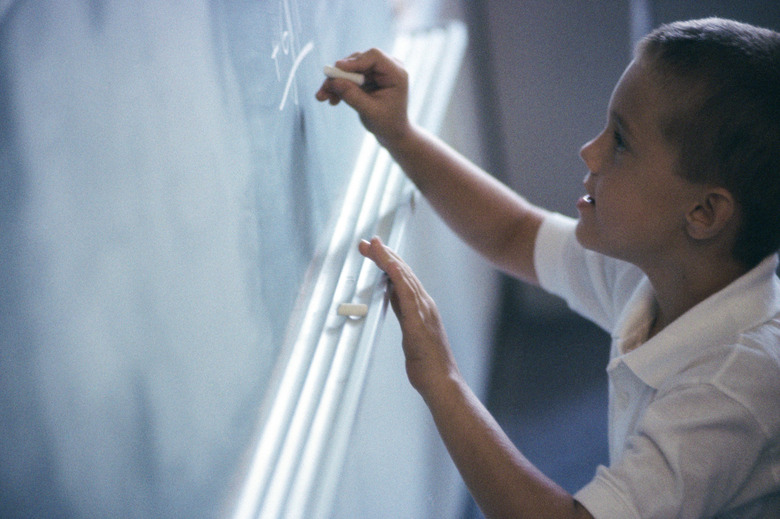How To Teach Two-Digit Addition For First-Grade Math
Once first graders have mastered the idea of place value and understand the concept of basic addition, moving on to two-digit addition — both with and without regrouping — is reasonably simple. Using manipulatives and visual cues during the learning process makes it even easier to grasp.
Start Out With Concrete Items
Start Out With Concrete Items
Whether you use counting cubes, craft sticks or any other tangible items, starting two-digit addition instruction with counting tools makes later mastery less confusing. Use rubber bands to make bundles of 10 craft sticks and use them with loose singles to set up practice problems. For example, help your budding mathematician show 13 + 4 by placing a 10s bundle and three single sticks together and then adding four more single sticks before counting them all to find the sum. When she is comfortable with this practice and is successful in finding the answer consistently, she's ready to move to a more abstract form of the problem.
T-charts for Visual Cues
T-charts for Visual Cues
Start written two-digit addition with problems written vertically. This makes aligning the ones column and 10s column members easier. Draw a t-chart and label the right column "ones" and the left column "10s." You can print these and then cover the page with clear contact paper so you can reuse it. Next, help your child record the digits in the proper columns. For example, with the problem 11 + 64, he should write 11 with a one in each of the columns. Directly underneath, he should write the 4 in the ones column and the 6 in the 10s column.
Adding the Lined-Up Numbers
Adding the Lined-Up Numbers
Your child is now ready for the actual addition. Use an index card, a piece of paper or your hand to cover up the 10s column on the left. Instruct your student to add the numbers she sees in the ones column on the right and to record it under the problem, in the same column. Then, move the cover and have her add the 10s column in the same way. Show her that two-digit addition is really just two single-digit problems, once she's lined everything up.
Expanding to Regrouping
Expanding to Regrouping
Begin the same way you did for addition without regrouping, by using manipulatives to explain the concept and then move to the t-chart. This time, your child will record the sum of the ones column by writing the digits in the proper columns. For 17 + 27, he writes the 4 in the ones column and a 1 in the 10s column for 7 + 7 = 14. Now, he adds the three numbers in the 10s column and records four, making the sum 44. After he has mastered this method, show him that he can write the "carried" 10s at the top of the chart column, instead of under the problem, and still add them together.
Cite This Article
MLA
Martin, Pamela. "How To Teach Two-Digit Addition For First-Grade Math" sciencing.com, https://www.sciencing.com/teach-two-digit-addition-first-2290668/. 24 April 2017.
APA
Martin, Pamela. (2017, April 24). How To Teach Two-Digit Addition For First-Grade Math. sciencing.com. Retrieved from https://www.sciencing.com/teach-two-digit-addition-first-2290668/
Chicago
Martin, Pamela. How To Teach Two-Digit Addition For First-Grade Math last modified August 30, 2022. https://www.sciencing.com/teach-two-digit-addition-first-2290668/
